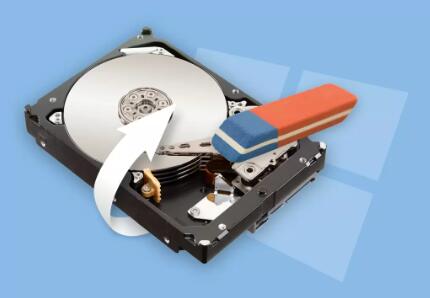Recovering data from a hard drive can be a complex process, depending on the nature of the data loss.
Before diving into recovery methods, it’s important to understand the different types of data loss:
Logical Failures: These occur when the file system or software becomes corrupted. The data is still physically present on the drive but is inaccessible due to system errors.
Physical Failures: These involve hardware issues such as a damaged hard drive, which can result from mechanical failures, electrical failures, or physical damage.

Preparing for Data Recovery
Stop Using the Drive: To maximize the chances of successful data recovery, stop using the drive immediately. Continued use can overwrite the data you’re trying to recover.
Assess the Situation: Determine the type of data loss and whether it’s logical or physical. This will help you choose the right recovery method.
Methods for Data Recovery
1. Software Recovery Tools
For logical failures, you can often use data recovery software. Here’s a step-by-step guide:
Choose a Recovery Tool: Popular options include Recuva, EaseUS Data Recovery Wizard, and Disk Drill. Each has its own strengths, so choose based on your needs and the drive’s condition.
Install the Software: Install the software on a different drive to avoid overwriting data on the affected drive.
Scan the Drive:
Launch the recovery tool.
Select the drive where the data was lost.
Initiate a scan. Most tools offer a quick scan and a deep scan. The quick scan is faster but may not find all files. The deep scan is more thorough but takes longer.
Preview and Recover Files:
After scanning, the tool will present a list of recoverable files.
Preview files if possible to ensure they are intact.
Select the files you wish to recover and choose a destination for saving them. This destination should be a different drive to avoid overwriting.
Save Recovered Files: Ensure that the recovered files are saved to a different drive or partition.
2. Using Backup Copies
If you have been using a backup system, this might be the easiest method:
Locate Your Backup: Check if you have a recent backup on another drive or cloud storage.
Restore Files:
Use the backup software or service to restore your files.
Follow the instructions provided by the backup tool to recover your data.
3. Manual File Recovery
In some cases, you might attempt to recover files manually if the damage is not severe:
Access the Drive: Connect the drive to a working computer using an external enclosure or SATA/USB adapter.
Explore the Drive:
Use file exploration tools to navigate the drive.
Check for files in different directories and folders.
Copy Files:
Copy any accessible files to another drive.
4. Professional Data Recovery Services
For physical failures or severe logical failures, professional services might be necessary:
Choose a Data Recovery Service:
Look for reputable services with good reviews.
Ensure they offer a no-data-no-fee policy.
Send the Drive:
Pack the drive securely to avoid further damage.
Follow the service’s instructions for sending the drive.
Recovery Process:
The service will perform a diagnostic to assess the damage.
They will attempt to recover the data using specialized tools and techniques.
Receive Recovered Data:
Once the recovery process is complete, you’ll receive your data on a new drive or via a digital transfer.
Tips for Successful Data Recovery
Act Quickly: The sooner you stop using the affected drive, the better your chances of successful recovery.
Use Reliable Tools: Choose well-reviewed and reliable recovery tools and services.
Avoid DIY Repairs: If the drive has physical damage, DIY repairs can worsen the situation. Leave it to professionals.
Keep Backups: Regularly back up important data to avoid future data loss.
Handle Drives Carefully: Physical damage can occur from mishandling. Always handle hard drives with care.
About us and this blog
Panda Assistant is built on the latest data recovery algorithms, ensuring that no file is too damaged, too lost, or too corrupted to be recovered.
Request a free quote
We believe that data recovery shouldn’t be a daunting task. That’s why we’ve designed Panda Assistant to be as easy to use as it is powerful. With a few clicks, you can initiate a scan, preview recoverable files, and restore your data all within a matter of minutes.
Subscribe to our newsletter!
More from our blog
See all postsRecent Posts
- How do i change the format of a video file 2025-04-16
- What video format does google slides support? 2025-04-16
- Best format for short form videos 2025-04-16

 Try lt Free
Try lt Free Recovery success rate of up to
Recovery success rate of up to









